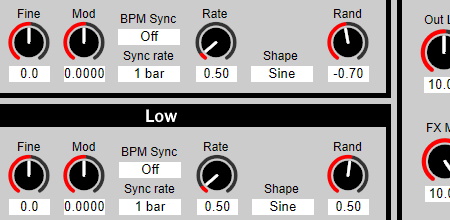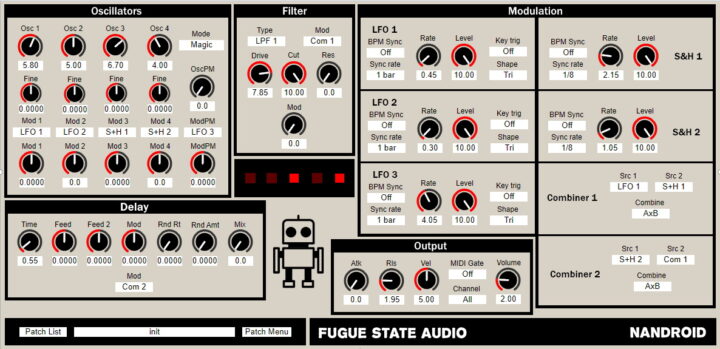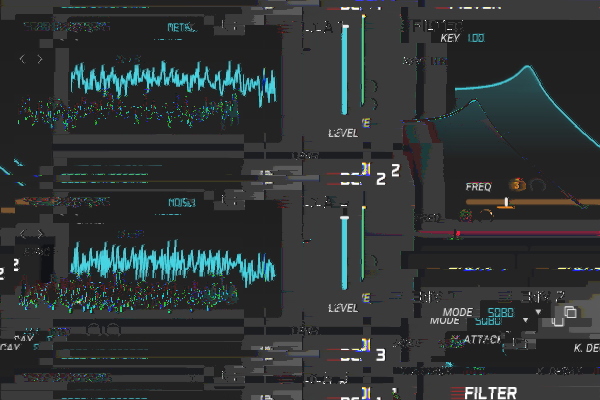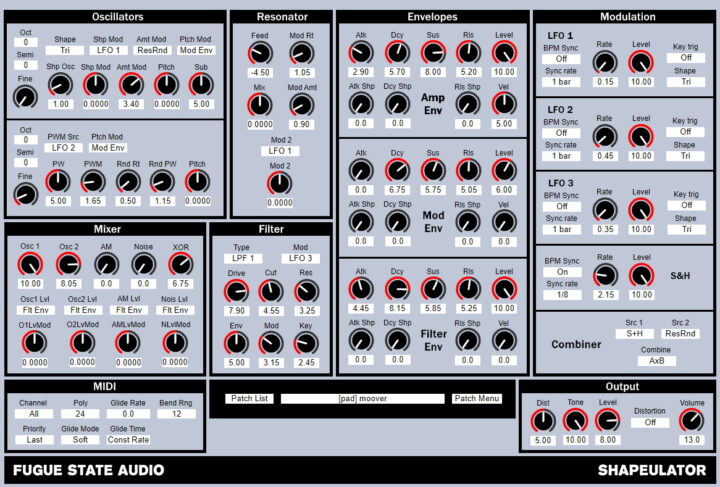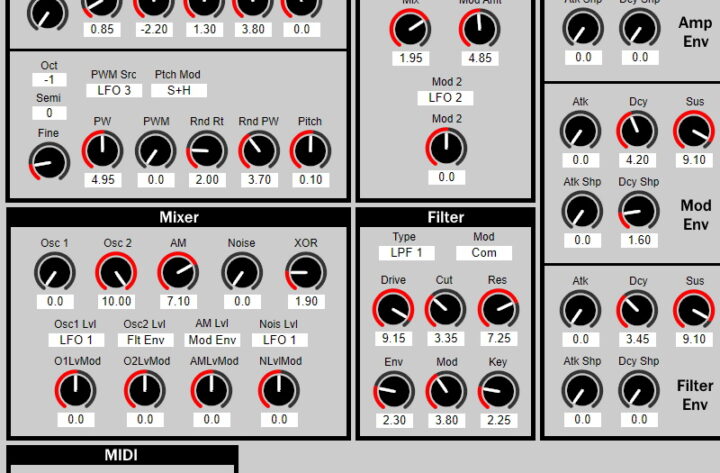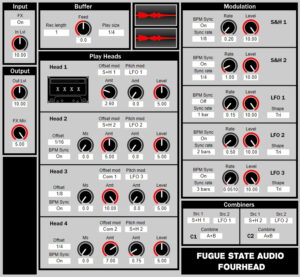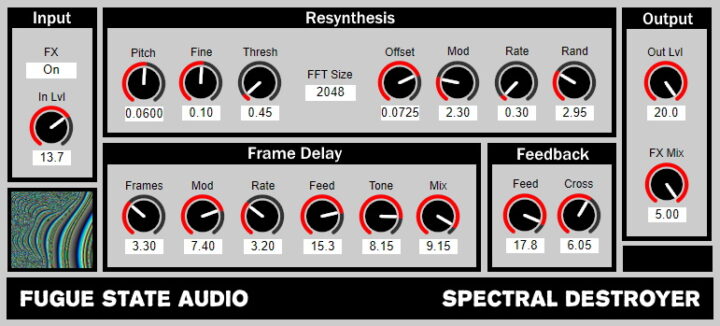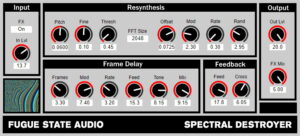Spectral Lemuring is, as the name implies, a spectral processing effect which is inspired by a discontinued freeware plugin with a similar name. The feature set isn’t exactly the same, but like the plugin that inspired it, it can process the high-magnitude and low-magnitude parts of the FFT signal separately, and can also “freeze” the signal.
Among the ways it differs from its inspiration are the separate pitch shifting for high and low-magnitude signals, and a resynthesis section (another way of “rebuilding” the FFT signal) which can be mixed with the iFFT output. The split point for the high and low-magnitude signals can also be modulated.
This plugin is mostly finished, though I will probably be adding preset management as present in other recent FSA plugs, fixing some graphical stuff, etc. Patreon supporters get access to a preview version, available from the FSA Patreon page.
